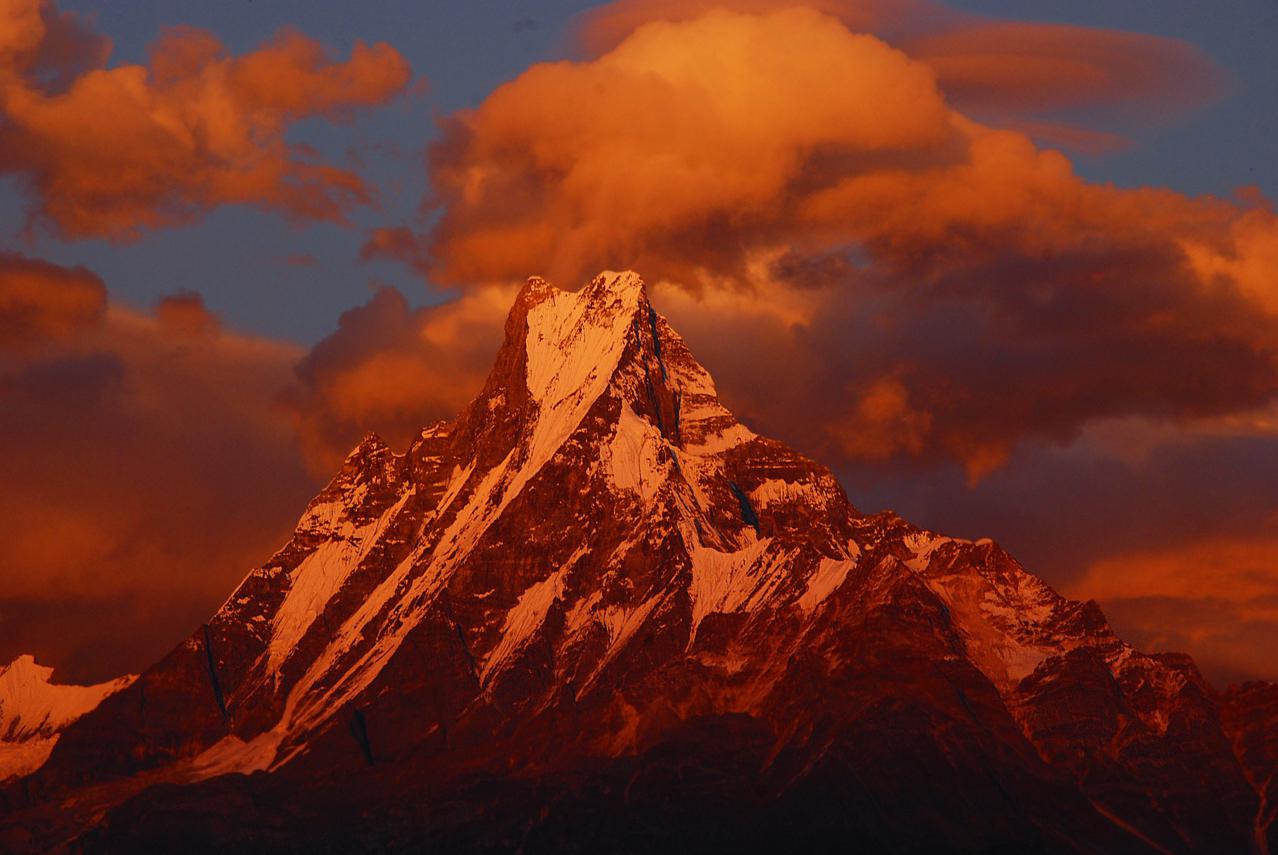A road has overtaken the second half of the Annapurna circuit.* A small section, near the trail’s end, remains blissfully free of traffic. Tate, Jo, Val and I jeeped, walked, and bussed as fast as we could to get there.
After two weeks of brown Himalayan desert the sudden green was striking. Flowers adorned every home. Fields overflowed with rice, millet, and barley. We were dumbfounded. A young boy ran to us brandishing a handful of oranges. I challenged him to a footrace, lost, and bought his oranges.
Interrupting the joyous scene was Jo’s foot. He was in a lot of pain. His trek was over. We enjoyed a final evening of good food and laughs in a perfectly rustic homestay then bid him farewell. Tate carried on with us, the famous Poon Hill awaited.
Nepal is full of heart stopping views but Poon Hill’s offering ranks among the most spectacular. In one direction Himalayan giants stretch across the horizon, in the other the land undulates down to the Indian planes. We watched in awe as the sky turned pink, then purple, then black. None of us will ever forget it.
 Now it was Tate’s turn to say goodbye. We wished him well and took a sharp turn East. Our new target – Annapurna base camp.
Now it was Tate’s turn to say goodbye. We wished him well and took a sharp turn East. Our new target – Annapurna base camp.
* There are detours that follow the opposite side of the valley, but the road is still noisy and views are minimal by Nepali standards. With most of both halves of the trek significantly affected by the road, the Annapurna circuit is dying. Standards of living will be raised for some inhabitants, but at the cost of income for the entire region. Mountain bikers and day trippers are the future here. Sadly the lion’s share of tourism profits will be taken from on-site local businesses and put into the pocket of agencies in Kathmandu and Pokhara.




















What do you think? Leave me a comment.